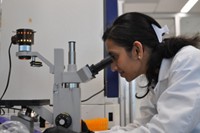Advertisement
Grab your lab coat. Let's get started
Welcome!
Welcome!
Create an account below to get 6 C&EN articles per month, receive newsletters and more - all free.
It seems this is your first time logging in online. Please enter the following information to continue.
As an ACS member you automatically get access to this site. All we need is few more details to create your reading experience.
Not you? Sign in with a different account.
Not you? Sign in with a different account.
ERROR 1
ERROR 1
ERROR 2
ERROR 2
ERROR 2
ERROR 2
ERROR 2
Password and Confirm password must match.
If you have an ACS member number, please enter it here so we can link this account to your membership. (optional)
ERROR 2
ACS values your privacy. By submitting your information, you are gaining access to C&EN and subscribing to our weekly newsletter. We use the information you provide to make your reading experience better, and we will never sell your data to third party members.
Biological Chemistry
New Route To On-Off Gene Control
RNA-guided system turns genes both on and off in cells, providing new options for studying protein expression and developing disease therapies
by Stu Borman
September 9, 2013
| A version of this story appeared in
Volume 91, Issue 36
A bacterial immune system component called CRISPR/Cas9 has been widely adopted in the past year for modifying genes and turning them on or off to study gene expression and develop new therapies. Timothy K. Lu and coworkers at MIT have now succeeded in both activating and repressing genes with the same Cas9 construct, just slightly modified by a customized guide RNA in each case to hit a different spot on a gene’s promoter (ACS Synth. Biol. 2013, DOI: 10.1021/sb400081r). The researchers note that the constructs are easier to design, synthesize, and validate than gene transcription control elements based on zinc finger proteins and transcription activator-like effectors and are more compact and versatile than CRISPR/Cas9 systems that turn genes on or off but not both. They also showed that their system can be used to turn synthetic gene promoters on and off in engineered yeast and human cells—a step toward creating synthetic circuits inside cells that could be used to detect or correct malfunctioning networks that cause disease.



Join the conversation
Contact the reporter
Submit a Letter to the Editor for publication
Engage with us on Twitter